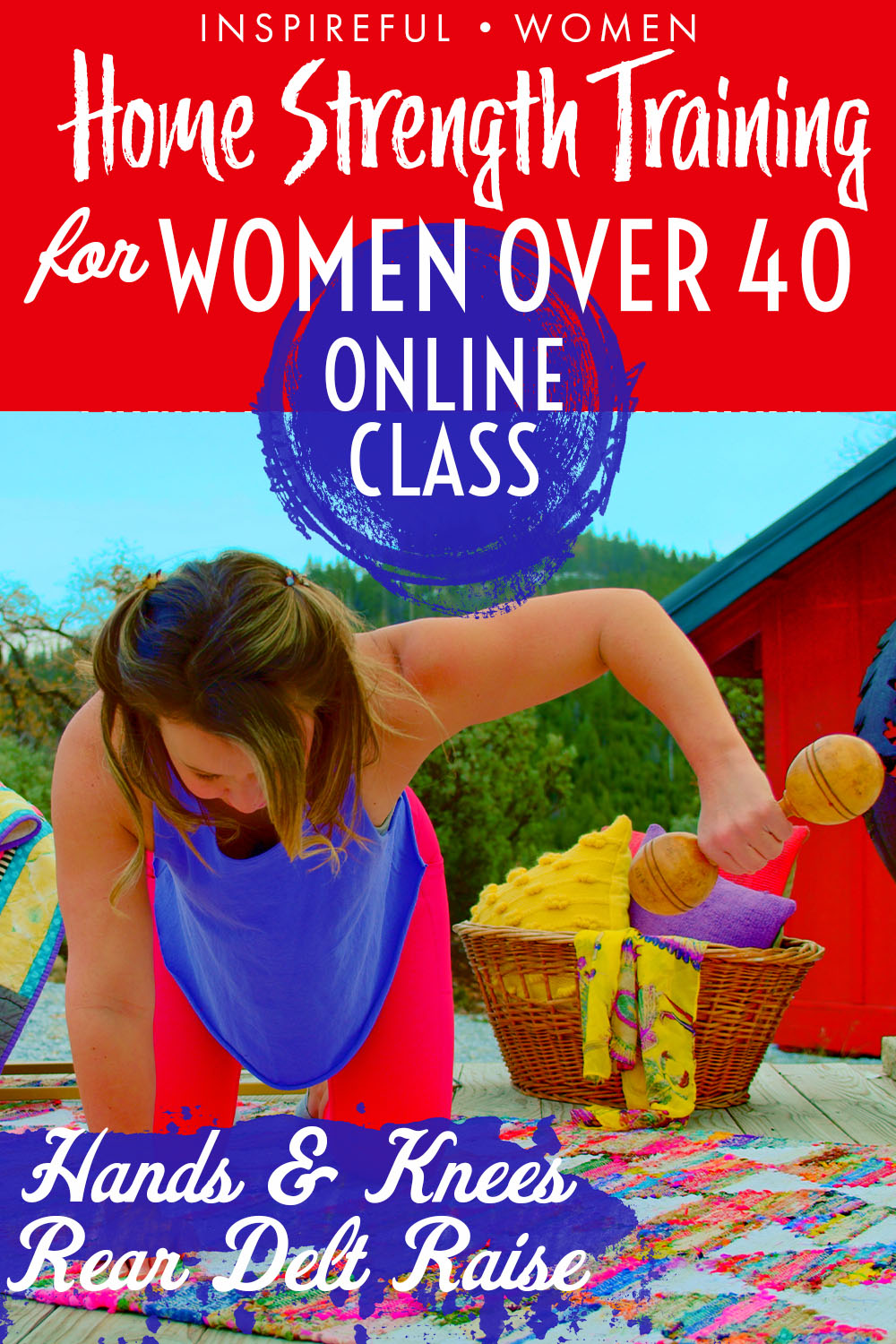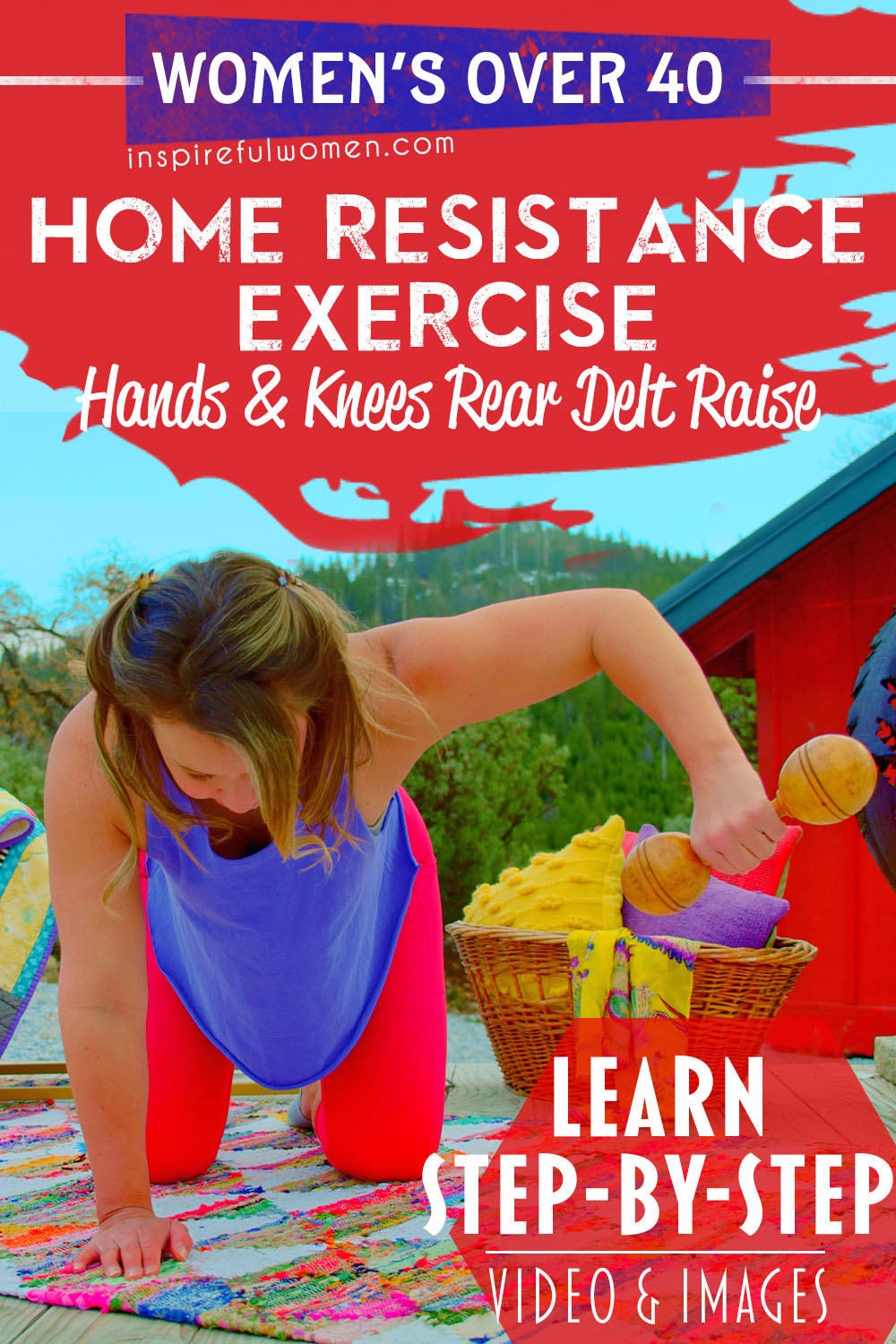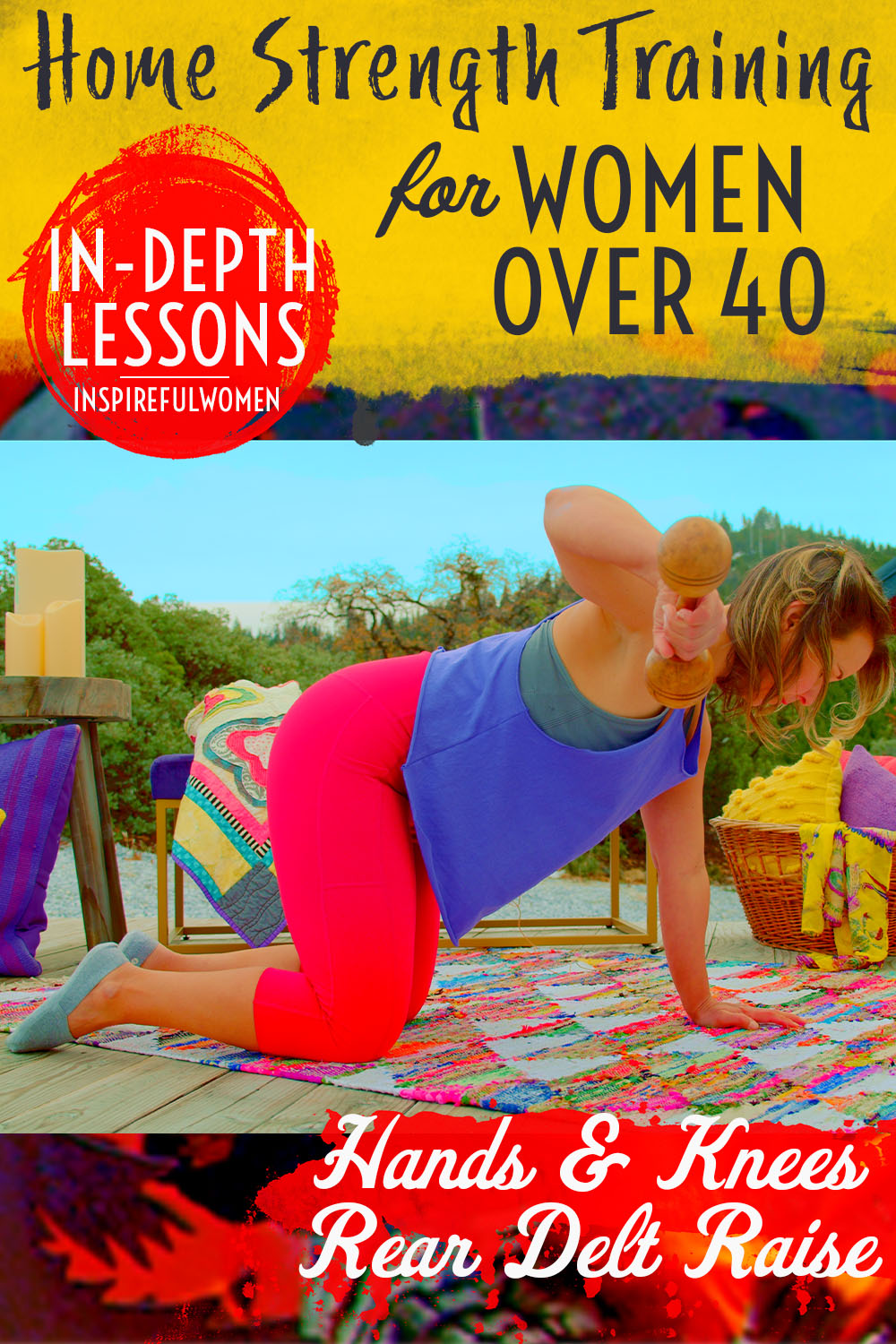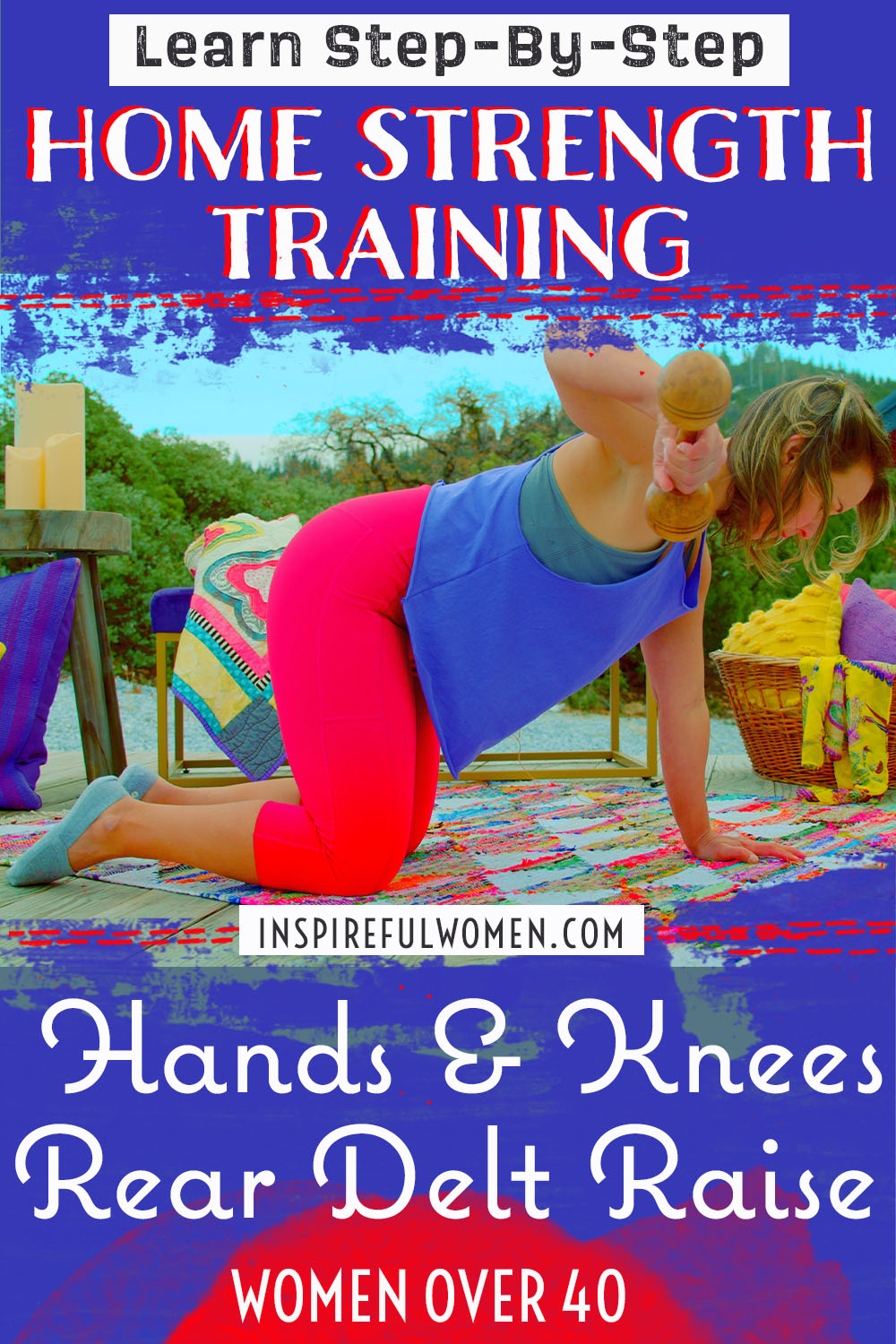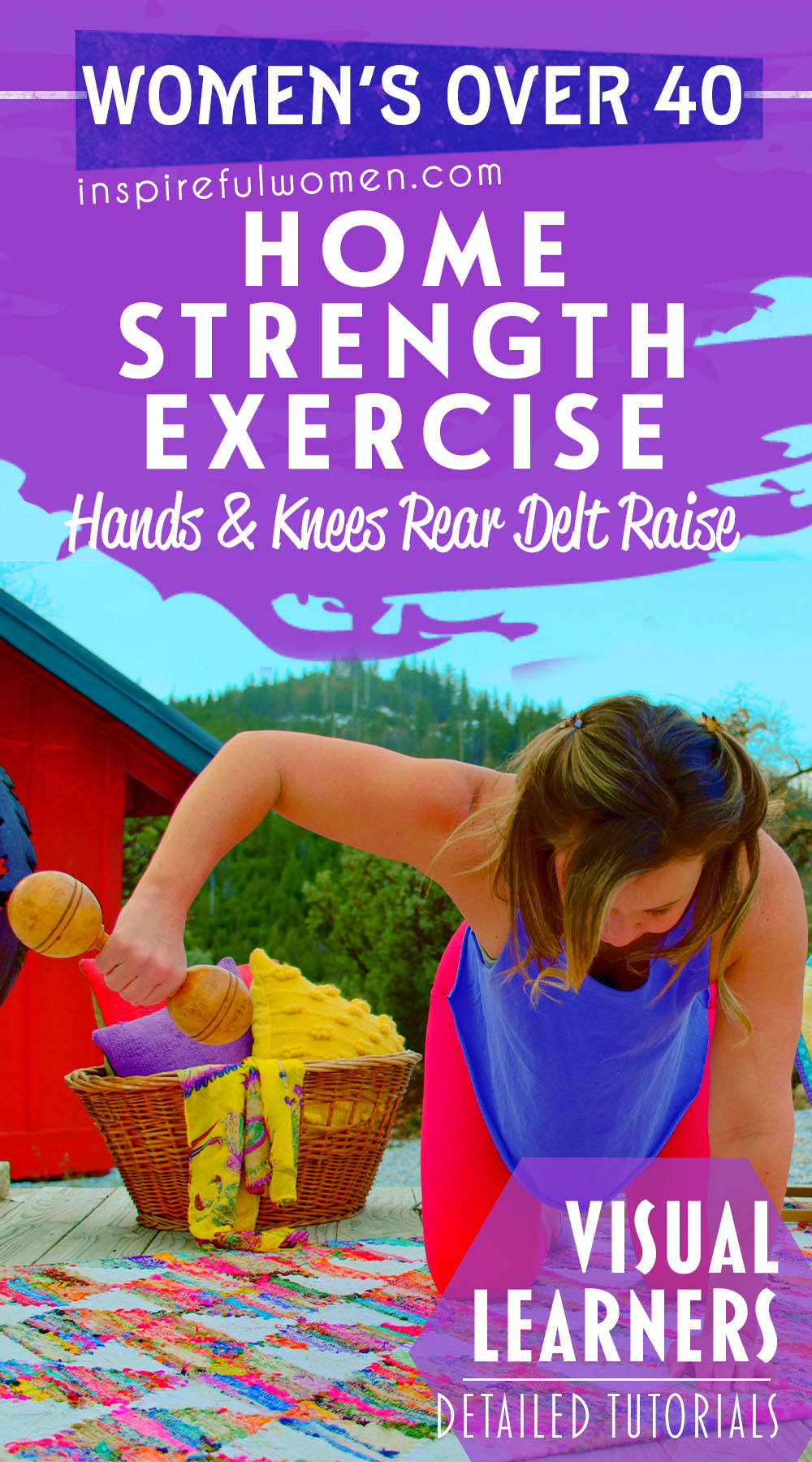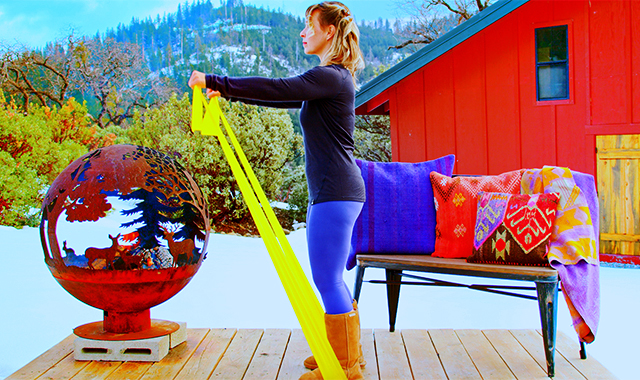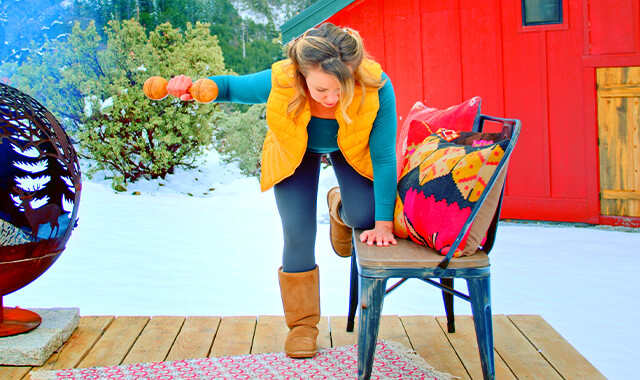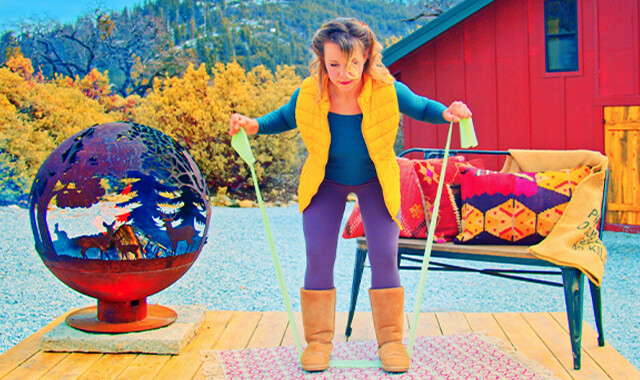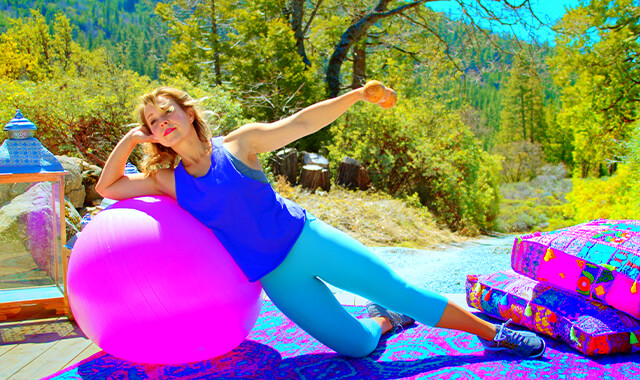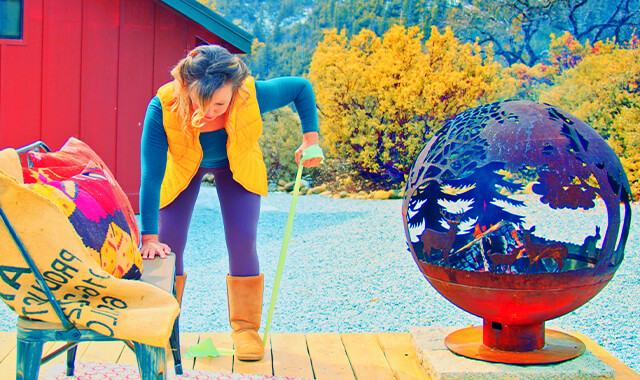Single Arm Hands & Knees Rear Delt Raise w/ Dumbbell
How to Do the Dumbbell Single Arm Bent Over Rear Delt Row | In-Depth Guide [VISUAL LEARNERS] Beginner
Proper Form | Home Strength Training
WHAT DO YOU WANT TO SEE?
QUICK DEMO
QUICK DEMO
MUSCLES THIS WORKS
MUSCLES
MAIN MUSCLES WORKED IN Dumbbell Single Arm Hands & Knees Rear Delt Raises
Rear Deltoid
The rear delt (aka posterior delt) is the back of your main shoulder muscle, called the deltoid.
OTHER MUSCLES WORKED:
- All portions of the deltoid muscle; scapular muscles (pectoralis minor, subclavius, latissimus dorsi, lower trap, serratus)
- External rotators ( infraspinatus and teres minor).
STARTING POINTERS
Starting Pointers
WHAT WE'RE DOING TODAY
This is a nice option if you don’t have a bench. It has the added bonus of working both arms, each one differently. The exercise works the rear deltoid of your working arm along with your shoulder and arm that are on the floor. Weight-bearing through the arm (the arm on the floor) works all of the muscles of the shoulder joint at the same time (co-contraction) to keep the shoulder stable and to train the proprioceptors of the joint (the receptors that communicate with the brain so that it knows where the arm is). Weight-bearing exercises are good for stimulating bone growth, especially for individuals with/or at risk of osteopenia or osteoporosis (low bone density). The hands and knees deltoid raise also work the muscles that stabilize the back and hips.
This exercise works most of the muscles that move and stabilize the shoulder blades as the arms move. The muscles are worked on both sides but on each side in a different way. The arm on the floor works to hold the body still (static stability) and the other arm moves. The muscles around the shoulder blade of the working arm work to hold the shoulder blade still as the arm moves in the socket. When using a dumbbell, the maximum resistance will be greatest when the upper arm is parallel to the floor, as you lift the arm further behind the body, the torque on the shoulder will decrease. The external rotators will be working hardest when the forearm is also parallel to the floor.
HOW TO DO THE EXERCISE
LOOKS
HOW Dumbbell Single Arm Hands & Knees Rear Delt Raises SHAPE OUR BODY
Toned, balanced, capped shoulders, good posture.
PROPER FORM
PROPER FORM: Dumbbell Single Arm Hands & Knees Rear Delt Raise
EQUIPMENT, SETS & REPS
EQUIPMENT
SUGGESTED STARTING WEIGHT FOR WOMEN:
5 lbs
SETS & REPS:
2 sets of 8 reps
PACE:
Moderate speed for lift up - with control and back stability, and slow, controlled return to start.
BODY POSITION
BODY POSITION FOR THE Dumbbell Single Arm Hands & Knees Rear Delt Raise
BODY POSITION: Hands and knees. Position your knees directly under your hips . The tops of your feet are resting on the floor, toes pointing back (it is fine to have your ankle dorsiflexed and your toes on the floor if that is more comfortable). Check to make sure that your thighs are straight up and down (vertical, perpendicular to the floor). Hips are bent to 90 degrees, knees are bent to 90 degrees. knees under hips. Neutral spine, abdominals activated. Weight is equally distributed through both hands and knees. A good hands and knees position is like the beginning of a push-up - sternum lifted, chest open, shoulder blades together, and down your back. Your back should be level - if you put a tea cup filled with water on your upper back, it would not spill.
ARMS: Directly under shoulders, hand flat, fingers pointed forwards. Arms near straight - can have a slight bend at the elbows if that is more comfortable. If this position hurts your wrist you can do this with your hand fisted. Lift your working hand off of the floor to make sure the position feels ok when you are stabilizing with just one arm, as you will be in the exercise.
HAND: Hold the dumbbell with a pronated grip.
HOW TO DO
HOW TO DO Dumbbell Single Arm Hands & Knees Rear Delt Raise
CUE: Focus on keeping your torso still and only moving through your shoulder joint.
Lift your working arm up out to the side. Let your elbow bend as your upper arm moves back.
Keep lifting your arm until your upper arm is parallel to the floor.
Rotate your upper arm to lift your forearm so that it is parallel to the floor.
Pause briefly in the end position.
Rotate your arm back so that your forearm is perpendicular to the floor, and lower your arm back towards the floor.
Lower until your hand is just above the floor without touching the weight down, this will keep some tension on the muscle.
Begin the next rep.
HOW TO SAFELY GET OUT OF THE EXERCISE
From the starting position, set the weight down.
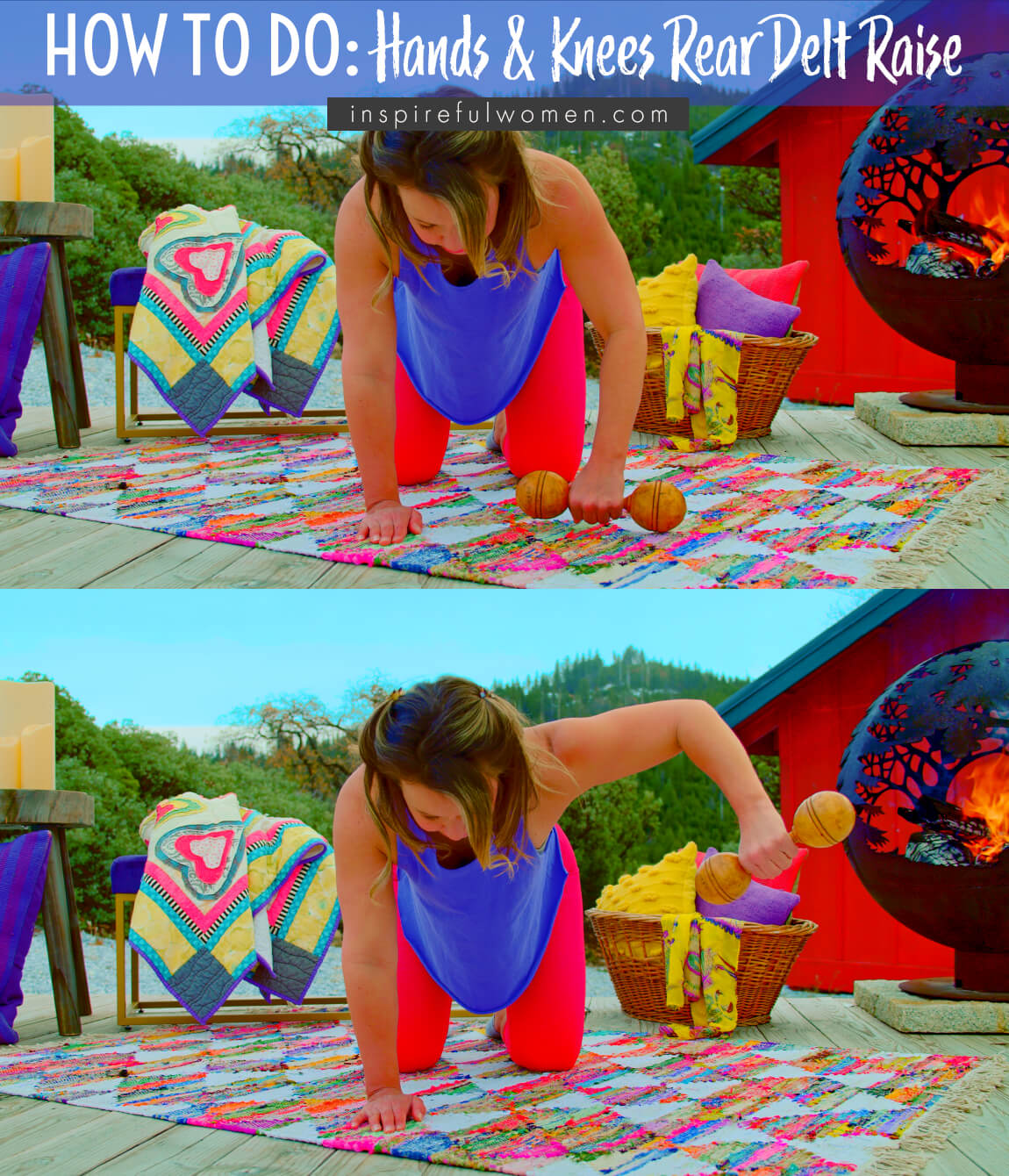
WHAT WE'RE DOING TODAY
WHAT & WHY
BENEFITS OF TRAINING THE rear deltoid
WHAT
This exercise is designed to work muscle on the back of the shoulder - the back (posterior or rear) part of the deltoid muscle. These muscles are worked by moving the arm back, and slightly behind the body. The rear deltoid also helps to rotate the arm the underside of the arm up.
This version of a rear deltoid raise is done in a supported position. You will need a bench or a low sturdy object like a coffee table. One arm and one leg placed on the bench will help to hold your body still as you pull your upper arm back behind the body and then rotate it out so that the hand moves up towards the ceiling.
WHY BOTHER DOING IT?
WHY
WHY DO WE EVEN CARE?
WORK THE SLIGHTLY IGNORED PART OF OUR SHOULDER MUSCLE
The deltoid muscle is the large visible muscle on the top of the shoulder. The muscle can be thought of as having 3 different parts, each part moves the arm in a different direction. The rear deltoid or posterior deltoid is the part of the muscle that lies on the back side of the shoulder. The other two parts of the deltoid muscle lift the arm to the front and to the side of the body. In our everyday lives, and even in our workouts, we spend a lot of time moving our arms to the front and to the sides of the body. We spend very little time moving our arms behind us.
This might make you think that the rear deltoid does not need to be strong. But it is important to know that all three parts of the muscle need to be able to work together to keep the shoulder joint healthy. The entire deltoid muscle works to stabilize the shoulder joint when you use your arm, and when you are lifting or carrying a heavy object. A well-balanced deltoid muscle is needed for healthy shoulder movement and posture. If you strengthen the front and middle deltoids but not the rear deltoids, then you will create an imbalance. Keeping all three parts of the deltoid muscle strong and healthy can improve posture, make lifting and carrying easier, and prevent injury. The rear deltoid raise also works the muscles of the back, including the muscles around the shoulder blade that work to correct a slumped posture position.
PROMOTES MORE CONTROLLED MOVEMENT OF OUR SHOULDER
It is interesting (at least to me) to think about how the muscles work. Muscles work together to coordinate movement, so even though one muscle is primarily responsible for a specific movement - if the other muscles are not balancing out the primary mover - our movement would be very uncontrolled.
For example: throwing a ball, even though the front of the shoulder and the chest muscles are doing most of the work to pull the arm forward forcibly, the back of the shoulder needs to be putting on the brakes - just the right amount at just the right time in order to control the movement. If the muscles on the front overpower the muscles on the back of the shoulder - the upper arm bone would move forward in the shoulder joint. Over time, this can damage the joint or the soft tissues of the joint.
WORKS THE REAR DELT FOR BOTH IT'S FUNCTIONS + BONUS ROTATOR CUFF WORK!
These exercises are designed to target the rear deltoid by working it into both it's main functions:
1. extension
2. external rotation
The exercise does a good job of working the rear delt at the same time as the rotator cuff muscles (infraspinatus and teres minor) which is important for establishing good movement patterns.
This exercise is done in a bent over position. To hold the position, the muscles of the back of the legs (gastroc/soleus, hamstrings and gluteus maximus) need to be active. The back extensor muscles will work to hold the torso against the downward pull of gravity. The resistance is pulled back (as opposed to pulled down or up at an angle) so the scapular muscles, especially the mid and lower traps, rhomboids, and serratus anterior will help with the movement.
LOOKS LIKE THE BOMB.COM
I think defined rear delts just look awesome on a woman! I'm not usually into trying to look all a certain way, but there's something super attractive to me about having nice shape in this area.
EVERYDAY LIFE
EVERYDAY LIFE &
MUSCLE FUNCTION
HOW WE USE OUR rear deltoid MUSCLES IN EVERYDAY LIFE
1. REACHING BEHIND THE BODY
- Tending a kid in the back seat
- Reaching into the back pocket
- Bringing the arm back to throw a ball (overhand)
2. PULLING
- Pulling a car door shut
- Pulling a refrigerator door open
3. ROTATING THE ARM UP (EXTERNAL ROTATION)
- Reaching the back of your head for washing, brushing your hair
- Pulling a shirt off over your head
- Reaching the top of a zipper
- Scratching your upper back
- Turning your outstretched arm with the palm up (need shoulder external rotation and forearm supination)
- Receiving change in the palm of the hand
4. WORKS WITH THE OTHER PARTS OF THE DELTOID MUSCLE (ANTERIOR, MIDDLE FIBERS OF THE DELTOID) TO STABILIZE THE SHOULDER JOINT
- Improves the ability to lift and carry heavy objects (the arm has a stable base to work off of).
- Injury prevention
HOW TO FEEL WHAT MUSCLE IS WORKING
How to Feel What Muscle is Working
Take your opposite hand and place it on top of your shoulder. You should feel a hard, flat surface right on top close to the shoulder joint. Drop your fingers right below the bony surface. Hold your upper arm up (approximately 50 - 60 degrees out to the side) with the elbow bent. Push the upper arm back. You should feel the rear fibers of the deltoid activate under your fingers. It can help to push your elbow into the back of the chair or a wall.
SCIENCY STUFF
ALLLL MUSCLES & WHEN
ALL MUSCLES WORKING & WHEN DURING THE Dumbbell Single Arm Hands & Knees Rear Delt Raise
In the beginning position, the core stabilizers ( internal and external obliques, quadratus lumborum, psoas major, rectus abdominis, erector spinae, multifidi, transverse abdominis) hold the spine in a neutral position.
The hands and knees position uses the muscles surrounding and stabilizing the hip joints (hamstrings, quads, hip abductors and adductors, internal and external rotators). For this exercise, one arm is on the floor and the other arm (the working arm) is off of the floor. Supporting the upper body on one side only will cause a rotational force on the torso, the obliques and quadratus lumborum will work to hold the torso level stable.
The muscles of the weight-bearing arm (the arm on the floor) are co-contracting (contracting at the same time isometrically) to stabilize the shoulder blade and shoulder joint; these muscles include the biceps, triceps, rotator cuff (supraspinatus, infraspinatus, subscapularis, teres minor), latissimus dorsi, trapezius, rhomboids, serratus anterior, pectoralis, deltoids. The muscles of the arm will work isometrically to hold the elbow and wrist stable.
The posterior deltoids contract concentrically to lift the arm up and out to the side (from the floor out to the side - 90 degrees of abduction). The arm will be parallel to the floor and to the side. The arms are extended back and the rear deltoids, infraspinatus, and teres minor contract concentrically to externally rotate the arms.
The arms are lowered back to the starting position through eccentric contraction of the posterior deltoid.
PIN IT FOR LATER!
